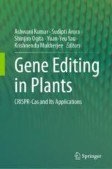Search
Search Results
-
Ecdysone receptor strongly influences larval–pupal–adult transition and melanization in Tuta absoluta
BackgroundTomato leaf miner ( Tuta absoluta ) is a quarantined pest that damages Solanaceae crops worldwide. The overuse of traditional pesticides...

-
N(alpha)-acetyltransferase 40-mediated histone acetylation plays an important role in ecdysone regulation of metamorphosis in the red flour beetle, Tribolium castaneum
Histone acetylation, a crucial epigenetic modification, is governed by histone acetyltransferases (HATs), that regulate many biological processes....

-
Nuclear receptor gene expression during early gametogenesis in sea urchin Mesocentrotus nudus gonads
Gametogenesis and the accumulation of nutrients such as proteins progress in sea urchin gonads during their growth. In vertebrate species, these...

-
The nuclear receptor gene E75 plays a key role in regulating the molting process of the spider mite, Tetranychus urticae
The nuclear receptor gene Ecdysone-induced protein 75 ( E75 ), as the component of ecdysone response genes in the ecdysone signaling pathway, has...

-
Transcriptional regulation analysis reveals the complexity of metamorphosis in the Pacific oyster (Crassostrea gigas)
Many marine invertebrate phyla are characterized by indirect development. These animals transit from planktonic larvae to benthic spats via...

-
Ecdysone controlled cell and tissue deletion
The removal of superfluous and unwanted cells is a critical part of animal development. In insects the steroid hormone ecdysone, the focus of this...

-
G protein-coupled receptors function as cell membrane receptors for the steroid hormone 20-hydroxyecdysone
AbstractG protein-coupled receptors (GPCRs) are cell membrane receptors for various ligands. Recent studies have suggested that GPCRs transmit animal...

-
RNA interference knockdown of insulin receptor inhibits ovarian development in Chilo suppressalis
BackgroundThe nutritional signaling pathway regulates an insect’s size, development, and lifespan, as well as playing a vital role in reproduction....

-
Microbes control Drosophila germline stem cell increase and egg maturation through hormonal pathways
Reproduction is highly dependent on environmental and physiological factors including nutrition, mating stimuli and microbes. Among these factors,...

-
Cloning and functional analysis of the molting gene CYP302A1 of Daphnia sinensis
BackgroundMolting is an important physiological process in the growth and development of arthropoda, which is mainly regulated by juvenile hormone...

-
Polycomb group genes are required for neuronal pruning in Drosophila
BackgroundPruning that selectively eliminates unnecessary or incorrect neurites is required for proper wiring of the mature nervous system. During Drosophila...

-
RNAi of the nuclear receptor HR3 suggests a role in the molting process of the spider mite Panonychus citri
Ecdysteroids regulate molting in arthropods by binding to heterodimers of the ecdysone receptor and retinoid-X-receptor, homologous to the...

-
The intrinsically disordered region of GCE protein adopts a more fixed structure by interacting with the LBD of the nuclear receptor FTZ-F1
The Drosophila melanogaster Germ cell-expressed protein (GCE) is a paralog of the juvenile hormone (JH) receptor - Methoprene tolerant protein (MET)....

-
Transcriptional profiling of spiny lobster metamorphosis reveals three new additions to the nuclear receptor superfamily
BackgroundThe Crustacea are an evolutionarily diverse taxon which underpins marine food webs and contributes significantly to the global economy....

-
Differential gene expression and microRNA profile in corpora allata-corpora cardiaca of Aedes aegypti mosquitoes with weak juvenile hormone signalling
The corpora allata - corpora cardiaca (CA-CC) is an endocrine gland complex that regulates mosquito development and reproduction through the synthesis...

-
Functions of the Hsp90-Binding FKBP Immunophilins
The Hsp90 chaperone is known to interact with a diverse array of client proteins. However, in every case examined, Hsp90 is also accompanied by a...
-
Transcriptome analysis of reproductive tract tissues of male river prawn Macrobrachium americanum
BackgroundThe river prawn, Macrobrachium americanum (M. americanum), is one of the largest prawns of the genus in Latin America and is an...

-
Identification of glucocorticoid receptor in Drosophila melanogaster
BackgroundVertebrate glucocorticoid receptor (GR) is an evolutionary-conserved cortisol-regulated nuclear receptor that controls key metabolic and...

-
Plant Recombinant Gene Technology for Pest Control in the Twenty-First Century: From Simple Transgenesis to CRISPR/Cas
The current progress in genetic technologies (methodologies) allows to create crops with the modified genome to counter different pest species....
-
The Vast Utility of Drosophila Oogenesis
In this chapter, we highlight examples of the diverse array of developmental, cellular, and biochemical insights that can be gained by using...
